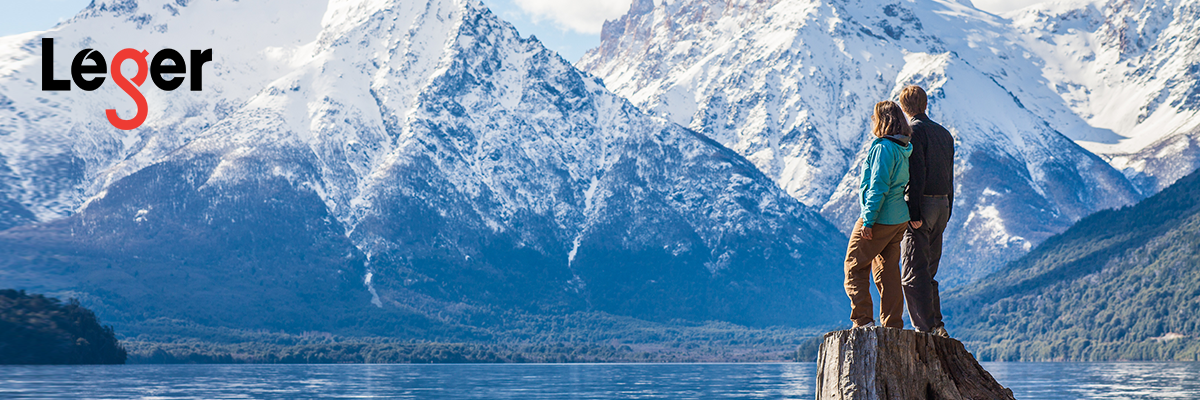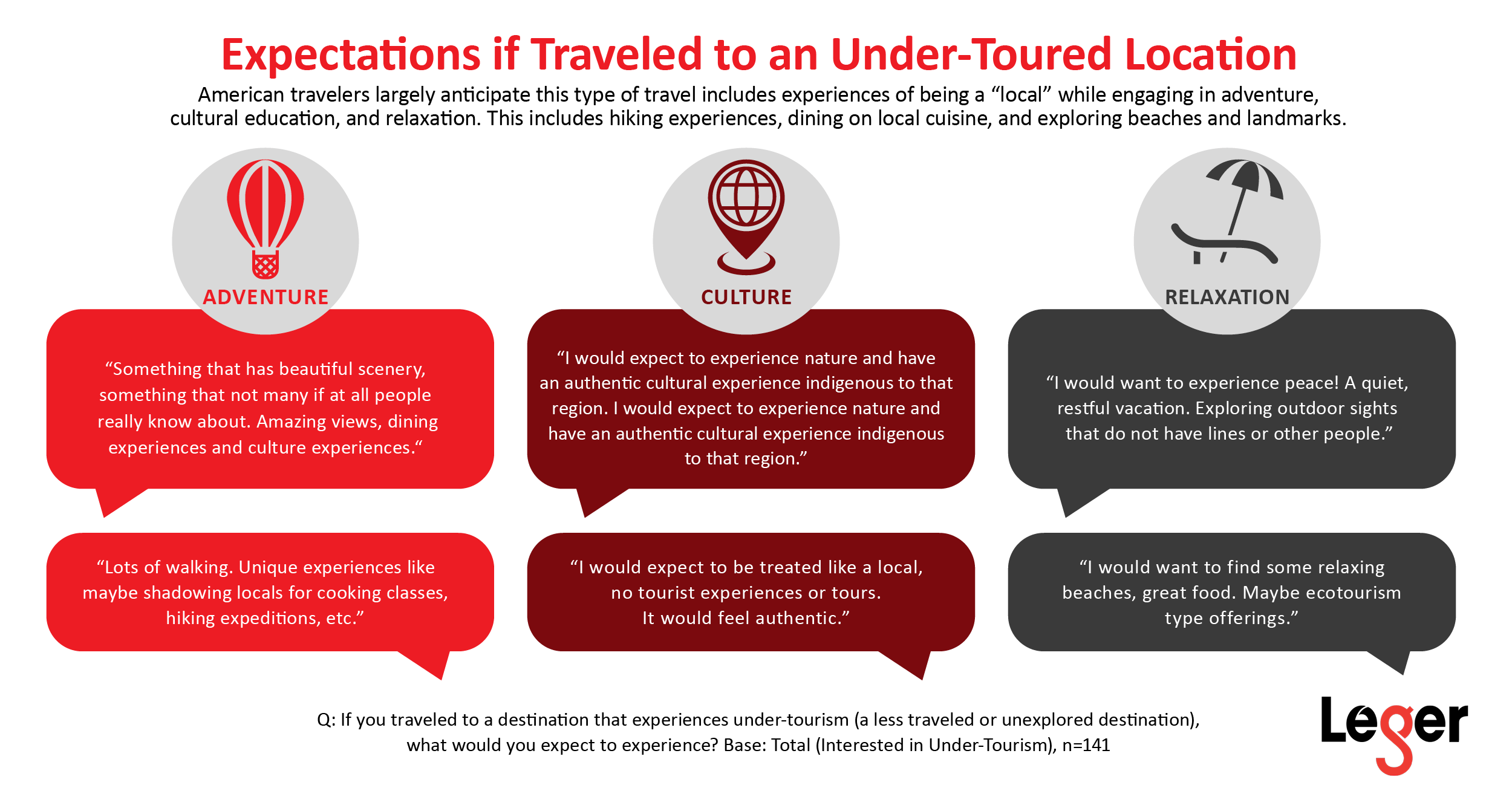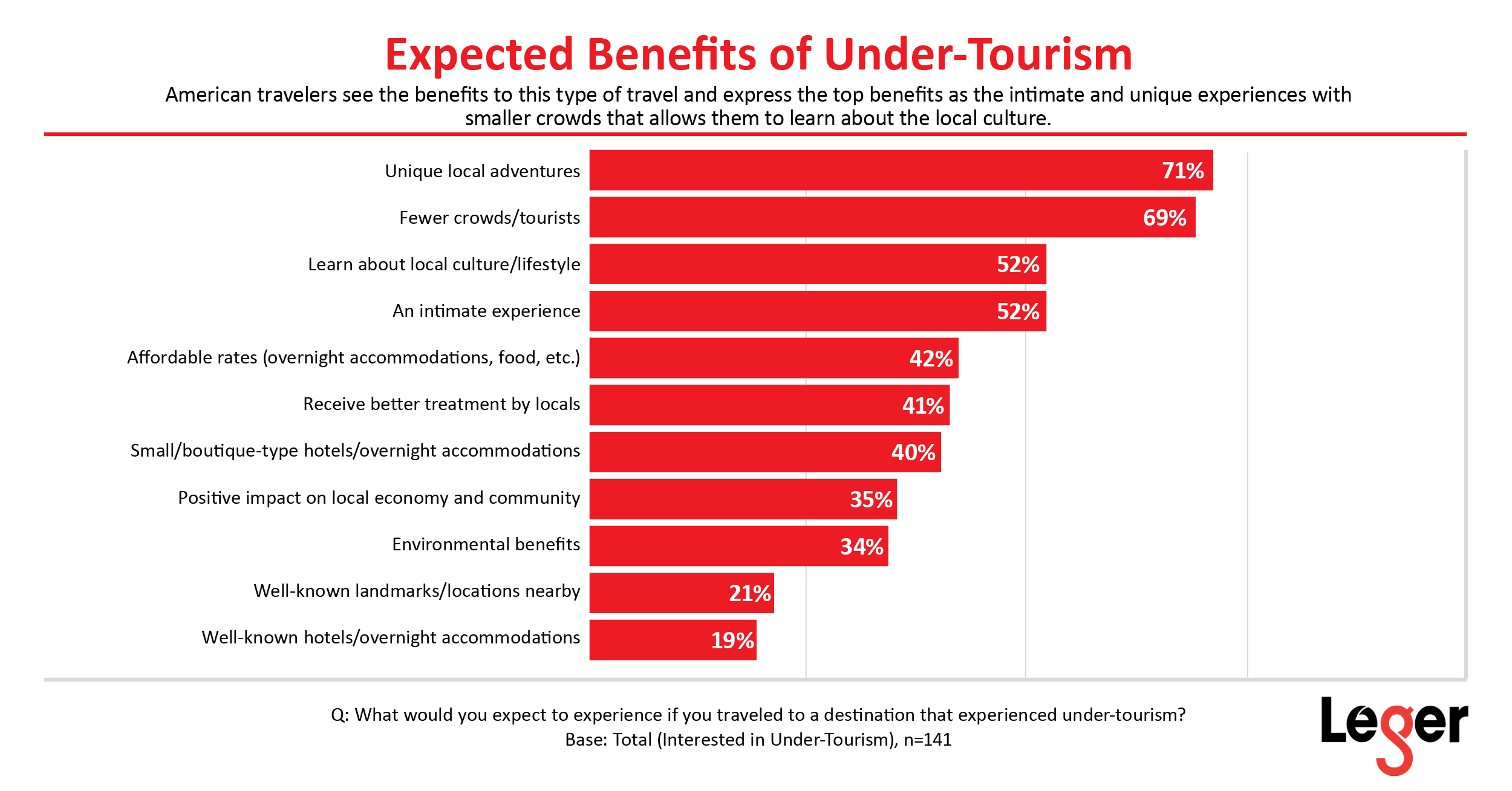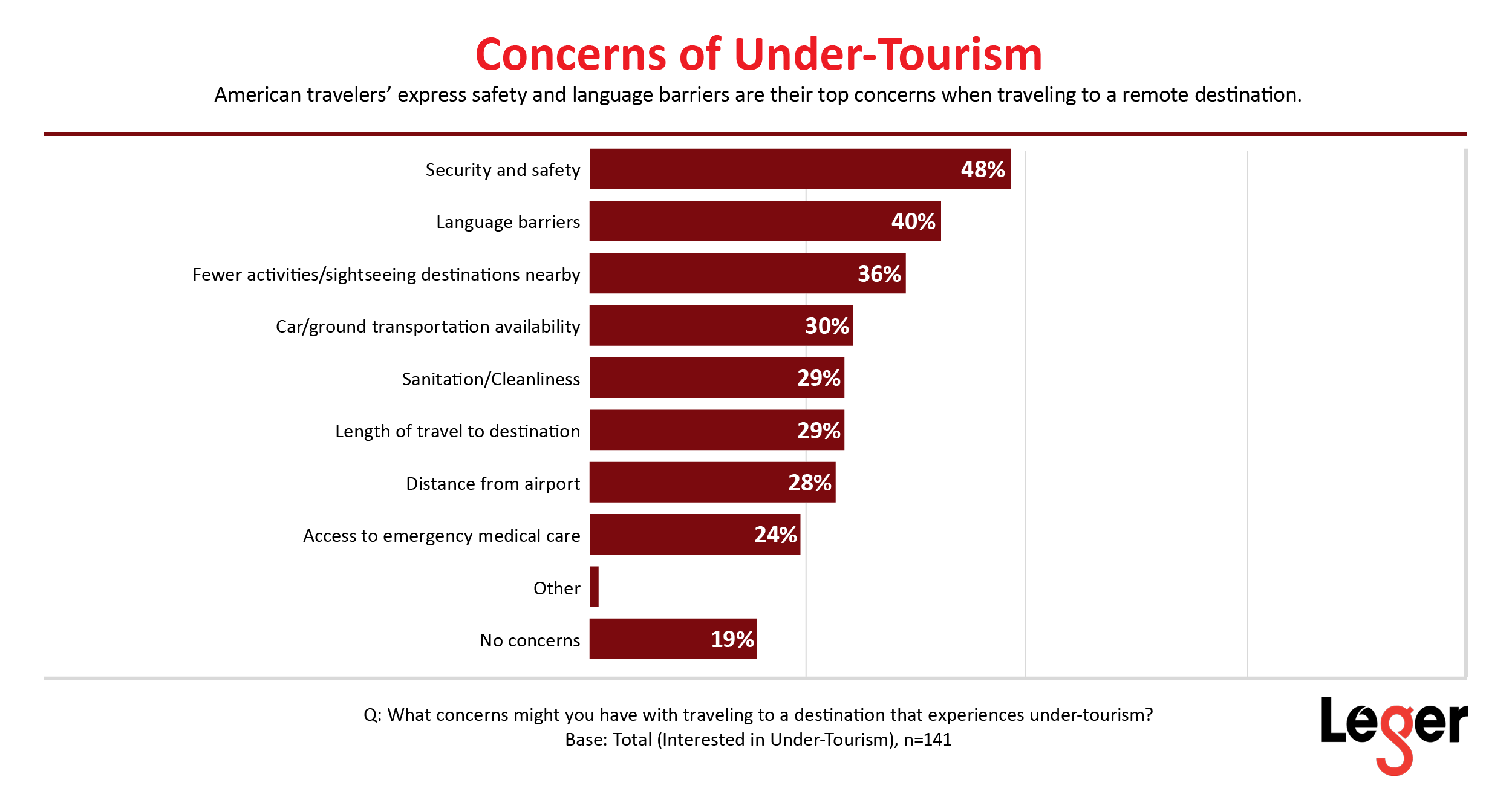Under-Tourism is the trend of taking a trip to a less traveled and more unexplored destination. Travelers who scour social media for “destination finds” know that under-tourism has gained in popularity in recent years. There are examples like Getaway House, which has 1 million followers, who make under-tourism feel like a new way to unplug and unwind. Under-toured destinations that Getaway House promotes include Coosa River, which is an hour outside of Birmingham, AL, and Starved Rock, IL in the suburbs of Chicago.
The opposite of under-tourism is “over-tourism”, or destinations overrun by tourists. A common example is Venice. Locals are leaving Venice due to overcrowding. The current population is around 50,000, but roughly 110,000 visit the city per day (around 20 million tourists a year).
As consumers look to de-stress in the post-pandemic era, Leger explored consumer attitudes toward under-tourism through Leger’s proprietary 360 Travel Community, which is comprised of traveler consumers from a diverse range of demographics.
Younger travelers are fueling the increased popularity of under-tourism.

- 82% of 18–44-year-olds are interested in under-tourism.
- 63% of those ages 45+ are interested in under-tourism.
Local experiences for adventure, local culture and relaxation are expected from travelers. Expected “local” experiences for under-tourism destinations include hiking, local cuisine, cooking classes, and exploring nature such as beaches and landmarks.
The benefits and draw backs of under-tourism.
Overall, travelers indicated that they do not want to be treated like a tourist. Instead, local, indigenous, eco-friendly, immersive, and authentic experiences were cited as expectations for under-tourism. Fewer crowds and more intimate settings were also mentioned as benefits of under-tourism.
Conversely, the drawbacks of under-tourism include concerns about safety/security, language barriers and having less to do.
How are under-tourism trends influencing travel overall?
Even in over-tourist locations, the trend toward having deeper experiences is gaining popularity. Using the example of Venice, according to National Geographic, local communications suggest to tourists that they swap a day at St. Mark’s Square with a day at Lido. Similarly, the hotel Venezia Autentica emphasizes local artisans, instead of tours and local tourist traps. For the true under-tourist enthusiast, instead of Venice, the canal-lined city of Trieste is recommended as an under-tourist gem.
Like Venice, over-tourist destinations including Hawaii, Barcelona, and Thailand are seeking to limit the negative impacts of over-tourism. This can be accomplished in various ways, such as additional taxes on hotel stays or fees imposed on international airfare. In Maui, officials asked airline executives to limit airline routes after a boon of travelers following the pandemic. Longer-term, the better option for destinations that are over-capacity is to shift tourism to other under-tourist destinations in the same region.
Finally, the notion of the “socially conscious tourism” is becoming part of the messaging for under-tourist destinations and it’s a topic often debated on travel blogs. Versus large hotel chains/operators who are known for winning over local officials to meet large corporate objectives, the smaller operators are emphasizing that they are part of the community and therefore, they are willing to protect local interests and nature attractions.
Tap into Leger’s 360 Travel Community for more travel insights.
Leger’s 360 Travel Community is an ongoing, proprietary online research community comprised of travel consumers from a diverse range of demographics. With always-on access to this community, Leger can rapidly design and execute travel market research programs for our clients—a crucial advantage in such a fast-paced industry. Travel industry leaders like the U.S. Travel Association and many more trust Leger to guide them to greater success. Contact us today to learn how our solutions can lead you to brighter horizons, too.



